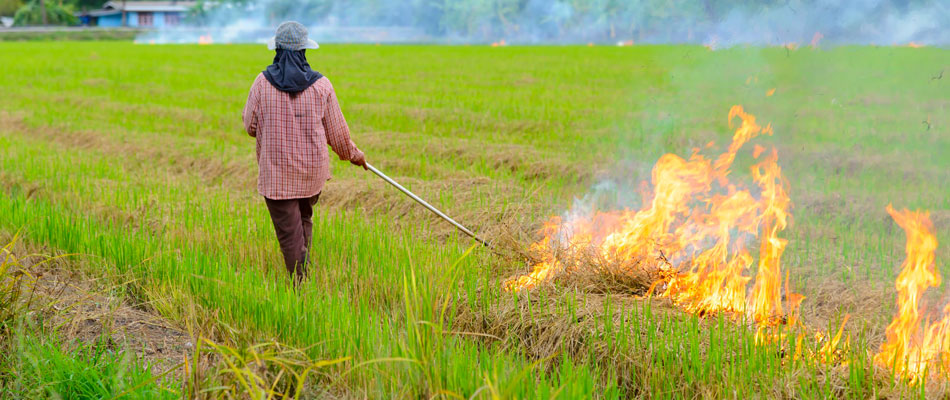“You never let a serious crisis go to waste” for “it’s an opportunity to do things you think you could not do before,” according to Rahm Emanuel, then newly-elected President Obama’s Chief of Staff in 2008 during the global economic crisis. Emanuel was referring to the crucial policy window provided by the hemorrhaging US economy to question established wisdom and push through new policies, deviating significantly from the status quo.
Delhi’s ‘airpocalypse’, a noxious brew of gases and particulate matter trapped by the city’s seasonal fog is a shocking but by now entirely predictable environmental, public health, and public relations crisis. If one ever wanted a prequel to a post-apocalyptic world where the government orders school closures, distributes air-masks, rations mobility, and engages night-patrols to prevent dust-producing construction, the Delhi smog would be a strong contender. It is also a sad commentary on a political elite that has learnt nothing from the Bhopal gas tragedy.
Every winter, Delhi’s 18.6 million residents find their beloved megapolis brought to a standstill with heavy smog causing a spike in road accidents, eye and throat irritation, difficulties in breathing, and emergency admissions to hospitals for respiratory ailments. Delhi’s Air Quality Index shot past 1000 on 4 November 2019, a full 500 points above the Indian National Ambient Air Quality Standard’s ‘severe’ category and 700 points over the US Environmental Protection Agency’s Air Quality Index of 300 beyond which air classifies as ‘hazardous.’
A crisis of this magnitude is too “good” to waste, for it provides a valuable opportunity for policy entrepreneurs to harness widespread public outrage to question fundamental assumptions and to propose policies that put a dent in the pollution problem. Similar crises in the US in Donora, Pennsylvania in 1948 which killed 20 people, and the infamous London Smog of 1952 in the UK which claimed thousands, acted as key events for nationwide air pollution control legislation as these countries’ emerging middle classes came to appreciate the need for a clean environment.
China, once derided by the New York Times as “choking on growth” for air pollution levels worse than Delhi has registered dramatic improvements, with Beijing on the verge of exiting the list of the world’s most polluted cities. The Chinese intensified their “war on pollution” in effect since 1998 by identifying highly polluted regions, shutting down coal plants, outlawing residential coal use, investing heavily in renewables and ramping up afforestation programs.
India’s partisan politics and federal structure means that it simply cannot move with the single-minded purpose on air pollution problems as China can by way of their regulatory hammer. A case in point is its Graded Response Action Plan, heavily inspired by China that has failed to make a steep dent in the pollution problem despite sweeping measures such as the odd-even scheme that took 15 lakh cars off Delhi’s roads and banned all construction.
Delhi is a harbinger of the air pollution challenge that is about to confront Indian cities as the country’s inadequate public transport system continues to spur an exponential rise in private vehicles. Moreover, the economy continues to venture into more energy-intensive and environmentally polluting sectors such as heavy manufacturing. India already has 15 out of the world’s 20 most polluted cities with 1,95,546 children succumbing to air pollution-related diseases in 2017 (a number that reflects only the reported deaths). A recent study published by the International Journal of Epidemiology estimated the combined economic fallout due to stubble burning and Diwali firecrackers at $190 billion over 5 years, a staggering 1.7% of India’s GDP.
There is an urgent need for a nationwide conversation on an alternative suite of policies that can create new incentive structures for individual and institutional sources of air pollution to change behavior. Even as discussions over long-pending emissions standards for thermal plants and vehicles continue, the government should expand Gujarat’s pioneering cap-and-trade program for particulate matter current deployed in Surat’s textile-dye industrial belt this year.
This market-friendly program imposes a cap (or ceiling) on total particulate matter allowed to be emitted by industries and then divides the cap into permits (allowances) that are distributed to industries based on current pollution levels. With the number of permits fixed and the Gujarat Pollution Control Board monitoring particulate matter levels, industries that find it easier to achieve reductions have a surplus of permits that they can sell to industries that need excess permits to cover their emissions. This approach holds emissions steady while providing industries the flexibility to either reduce their emissions via a variety of methods or buy additional permits from over-complying industries having it in excess which now have a new revenue stream and an incentive to reduce emissions further.
India must also accelerate the onset of the electric vehicle revolution. The recent ₹10,000 crore allocation for 3 years under Phase II of the Faster Adoption and Manufacturing of Hybrid Vehicles and Electric Vehicles is a welcome move in this direction. Deng Xiaoping, China’s reformist leader said that it “doesn’t matter whether a cat is black or white, as long as it catches mice” in justification of his push to liberalize the Chinese economy away from communism. India’s air pollution problem is now so severe that only a pragmatic leadership that uses a creative mix of regulatory and incentivizing policy instruments can ensure the return of breathable air.
Chaitanya Ravi
Assistant Professor of Public Policy


